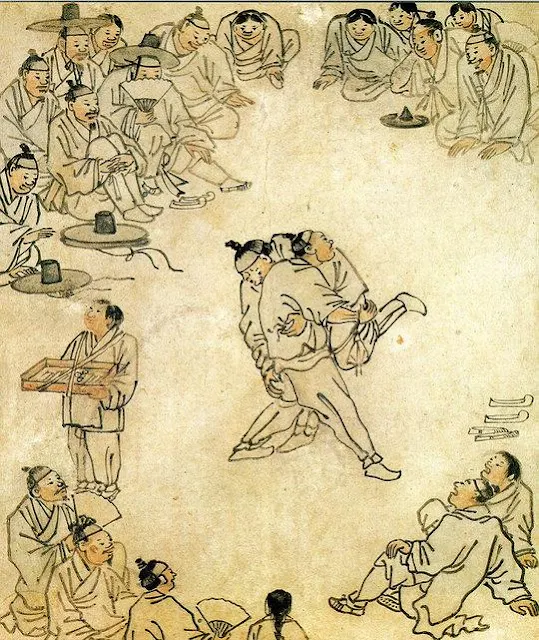May 31, 2025, marks the celebration of Dano Festival (단오, 端午) celebrated on the 5th day of the 5th lunar month. Dano is one of the most important traditional Korean holidays, historically ranked among the four major national holidays alongside Seollal (Lunar New Year), Chuseok (Korean Thanksgiving), and Hansik.
 |
| Washing hair in sweet flag water (창포물) in Dano Festinal |
1. Origin and Meaning of Dano (단오)
The word "Dano" (端午) means "the first fifth" — "dan" meaning "beginning" and "o" representing the number five. It is considered the day when yang energy (positive energy) is at its peak, according to ancient East Asian cosmology. This alignment of double yang (fifth day of the fifth lunar month) was thought to bring good fortune and protection from evil spirits.
 |
| Surichitteok (수리취떡): a traditional rice cake made with wild herbs |
2. Traditional Customs and Activities
Dano was a day of community celebration and seasonal rituals. Before the hot summer began, people performed various activities to promote health and ensure a bountiful harvest after the rice planting season.
 |
| Traditional customs in Dano festival |
Popular Dano Traditions:
- Ssireum (씨름) – Traditional Korean wrestling, primarily for men.
- Swing riding (그네뛰기) – A symbolic and athletic game enjoyed by women.
- Washing hair in sweet flag water (창포물) – Believed to enhance beauty and ward off evil.
- Wearing colorful thread bracelets (장명루) – A talisman to protect against disease and misfortune.
- Eating surichitteok (수리취떡) – A traditional rice cake made with wild herbs for health.
- Making cherry punch (앵두화채) and herbal drinks like Jeho-tang (제호탕) to beat the summer heat.
3. Dano Festivals Across Korea
Gangneung Danoje Festival (강릉 단오제)
The most iconic and best-preserved Dano celebration in Korea, Gangneung Danoje is designated as UNESCO Intangible Cultural Heritage and Important Intangible Cultural Property No.13 of Korea.
Spanning over 50 days, this event begins with sacred wine preparation (March 20, lunar calendar) and ends with a ritual called soje (소제) on the day after Dano.
 |
| Gangneung Danoje Festival |
Beopseongpo Danoje Festival (법성포 단오제) in Yeonggwang, Jeolla Province
This event includes lantern releasing, where participants make wishes while sending up glowing sky lanterns, following traditional beliefs.
Seoul Yeongdeungpo Dano Festival (서울 영등포단오축제)
Held in Yeongdeungpo, Seoul, this is the largest Dano celebration in the capital city, drawing visitors from across the country. It includes folk games, performances, and local food stalls.
4. Cultural Importance and Decline
 |
| Tranditional Korean wrestling |
In ancient Korea, nearly every month had seasonal festivals. However, during the Japanese colonial period, many were abolished in a bid to suppress Korean culture. Dano, once a public holiday, has since lost its official status, but continues to thrive as a cultural and community event.
While not a public holiday anymore, Dano remains a cherished part of Korea’s cultural calendar. In Jeonju, for example, Dano is also celebrated as Citizens' Day, reflecting its deep connection to Korean identity and tradition.
As South Korea continues to embrace both modernity and tradition, events like the Dano Festival offer a valuable glimpse into the spiritual, seasonal, and social life of ancient Korea.
Keywords:
단오, 단오제, Dano Festival Korea, Korean traditional holidays, what is Dano, Dano customs and food, Gangneung Danoje, Korean folk games, Ssireum wrestling, cherry punch Korea, surichitteok rice cake, UNESCO intangible cultural heritage Korea, Dano traditions, 5th lunar month festival Korea, Tết Đoan Ngọ, traditional Korean celebrations, Korean cultural festivals 2025
